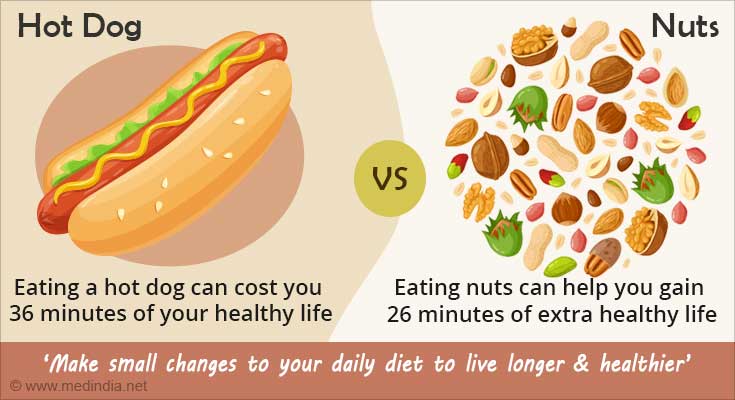said Katerina Stylianou, who did the research as a doctoral candidate and postdoctoral fellow in the the Department of Environmental Health Sciences at U-M’s School of Public Health. She currently works as the Director of Public Health Information and Data Strategy at the Detroit Health Department.
‘Foods with positive scores add healthy minutes of life, while foods with negative scores are associated with health outcomes that can be detrimental for human health.’
This work is based on a new epidemiology-based nutritional index, the Health Nutritional Index, which the investigators developed in collaboration with nutritionist Victor Fulgoni III from Nutrition Impact LLC. HENI calculates the net beneficial or detrimental health burden in minutes of healthy life associated with a serving of food consumed.
Calculating Impact on Human Health
The index is an adaptation of the Global Burden of Disease in which disease mortality and morbidity are associated with a single food choice of an individual.
For HENI, researchers used 15 dietary risk factors and disease burden estimates from the GBD and combined them with the nutrition profiles of foods consumed in the United States, based on the What We Eat in America database of the National Health and Nutrition Examination Survey.
Foods with positive scores add healthy minutes of life, while foods with negative scores are associated with health outcomes that can be detrimental for human health.
Adding Environmental Impact to the Mix
To evaluate the environmental impact of foods, the researchers utilized IMPACT World+, a method to assess the life cycle impact of foods (production, processing, manufacturing, preparation/cooking, consumption, waste), and added improved assessments for water use and human health damages from fine particulate matter formation. They developed scores for 18 environmental indicators taking into account detailed food recipes as well as anticipated food waste.
Finally, researchers classified foods into three color zones: green, yellow and red, based on their combined nutritional and environmental performances, much like a traffic light.
The green zone represents foods that are recommended to increase in one’s diet and contains foods that are both nutritionally beneficial and have low environmental impacts. Foods in this zone are predominantly nuts, fruits, field-grown vegetables, legumes, whole grains and some seafood.
The red zone includes foods that have either considerable nutritional or environmental impacts and should be reduced or avoided in one’s diet. Nutritional impacts were primarily driven by processed meats, and climate and most other environmental impacts driven by beef and pork, lamb and processed meats.
The researchers acknowledge that the range of all indicators varies substantially and also point out that nutritionally beneficial foods might not always generate the lowest environmental impacts and vice versa.
“Previous studies have often reduced their findings to a plant vs. animal-based foods discussion,” Stylianou said. “Although we find that plant-based foods generally perform better, there are considerable variations within both plant-based and animal-based foods.”
Based on their findings, the researchers suggest:
Decreasing foods with the most negative health and environmental impacts including high processed meat, beef, shrimp, followed by pork, lamb and greenhouse-grown vegetables.
Increasing the most nutritionally beneficial foods, including field-grown fruits and vegetables, legumes, nuts and low-environmental impact seafood.
“The urgency of dietary changes to improve human health and the environment is clear,” said Olivier Jolliet, U-M professor of environmental health science and senior author of the paper. “Our findings demonstrate that small targeted substitutions offer a feasible and powerful strategy to achieve significant health and environmental benefits without requiring dramatic dietary shifts.”
The project was carried out within the frame of an unrestricted grant from the National Dairy Council and of the University of Michigan Dow Sustainability Fellowship.
The researchers are also working with partners in Switzerland, Brazil and Singapore to develop similar evaluation systems there. Eventually, they would like to expand it to countries all around the world.
Source: Eurekalert



